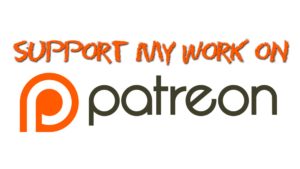Philosophy and Best Practices
Cart Before the Horse
 The easy part of teaching any curriculum is the curriculum. The hard part of learning to teach a new curriculum is figuring out how to teach it most effectively. For the sake of clarity, effective teaching will develop student conceptual understanding and problem solving. Earmarks of quality teaching include retention, connection, engagement, and thoughtful discussion among students, as well as high test scores of course.
The easy part of teaching any curriculum is the curriculum. The hard part of learning to teach a new curriculum is figuring out how to teach it most effectively. For the sake of clarity, effective teaching will develop student conceptual understanding and problem solving. Earmarks of quality teaching include retention, connection, engagement, and thoughtful discussion among students, as well as high test scores of course.
One of the problems with modern education and education research is the need to quantify everything. The adage, If it can’t be measured it cannot be improved, has bound us with conclusions based on extremely soft data, nonsensical results, and has engaged us in an insidious pattern of behavior. That same pattern is easily seen in students, and it drives teachers crazy.
If a student is in a class, then that class should cover new material for them. If a student gets a good grade, they will have learned the material. Grades measure learning and gained ability. Students that focus on the grade in lieu of learning struggle to get good grades. They have confused the marker of success with success.
Is there a more frustrating question to a teacher, from a student, than, “What can I do to bring my grade up?” Isn’t the answer almost always, “… just about anything will work, so long as it involves learning.”
That is exactly what is happening today in education. In order to conduct “scientific” research we quantify markers of success and measure them. We lose sight of what is really important and chase what has been measured. Teachers jump through hoops to create word walls, daily and in-depth content and language objectives, the good old SWBAT, and perform remediation that teaches students how to get quiz questions correct.
All of these actions are designed to show an increase in the markers of success but potentially do so in direct conflict of the true goal of education. Our job as educators is to train the minds of young people. Many best practices ease the cognitive strain to promote short-term positive results.
The end result is that between 40% to 60% of first year college students need to take remedial courses in English or Mathematics, or both. Let us explore how this happens.
Use retention as an example. Suppose a teacher is being coached that good teaching requires that students remember the material in say, four months. That teacher will take steps to make sure that students remember. There will be tricks, rhymes, and rewards for getting good test results on retention.
The problem is, this will not be the type of retention we are trying to develop. The retention our students need is a consequence of conceptual understanding, not brute-force memorization. With conceptual understanding comes the ability to reconstruct lost memories. That is a great tool! No matter what, the likelihood of losing information over time is astronomically likely. Besides that, if a student only remembers the fact or procedure, their ability to use that fact or procedure will be bound by how they’ve been taught to use it.
Retention is just an earmark of conceptual understanding. There’s more that comes along with conceptual understanding, like the increasing pace of integration of new material due to connections made, and improved engagement and problem solving skills. And, perhaps most importantly, when students conceptually understand, they’re not bound by what we have taught them, they can take what they know and go further than we did!
Not everything in education has artificial restrictions placed upon it by inappropriate data seeking. Climate and culture, for example, are two areas of focus for administrators. Yet, climate and culture would be incredibly difficult to measure … but you can feel it the moment you walk onto a campus! The same goes for relationship building between a teacher and the students.
Take a minute and imagine how artificial markers of determining the existence of a quality relationship between a teacher and student could be made. Now if the efficacy of your teaching was being evaluated on this false metric, and if that metric had been engrained in the culture of education, it is likely you would be engaged in the best practices of the day that would increase the frequency of that marker. Yet, would you really be building relationships? What if you believed you were and you were not, and the system told you that you were doing well? How would you know you were wrong if the system told you that you were right?
Baby and Bath Water
Now it is likely that quality outcomes are realized by chasing faulty markers of success. For example, if you learn how many siblings each of your students has, you’ll likely open the door to conversation and find connection. If a student attends tutoring to bring up their grades and they participate, they’ll likely learn. By learning their grades will improve, even if they believe the act of attending tutoring is what brought about the improvement.
There is nothing inherently wrong with a Content and Language Object, or Learning Target, or SWBAT, or whatever it may be called at your school. In fact, objectives are really needed when designing and implementing a lesson. Without the target the lesson will meander.
Before deciding that a particular best practice is a false metric and deciding to abandon it or treating it as a matter of compliance, first see if that false metric can be employed to foster the desired outcome. What should this best practice really build and why? Can you make it serve that end?
A great example is allowing students to re-take a test. If a student takes the same exactly test, especially after teacher-led remediation, of course the student will improve their grade. But, did they really learn the content, did they develop a conceptual understanding? Did they improve their problem solving skills?
Most likely, the conceptual understanding remained unchanged but the problem solving skills would have damaged. It is a bad outcome when students learn that the way they solve problems is by seeking someone else to solve the problem (unless they’re bound for politics).
That does not mean that allowing students to re-test is a bad practice. But it is a bad practice when done as described. What if, in order for a student to re-test, the student had to demonstrate their conceptual understanding and problem solving before they re-tested, and then the second test was different than the first? (Changing the numbers on a test does not make it different.) This would serve the student’s needs and encourage them to perform well. It would provide you with data that could be used to more accurately assign a grade. It is all around a great outcome!
How and Why
It is how and why we do what we do that makes it worth-while. That adds an additional layer of complexity to the profession of teaching the United States today. A teacher can follow all of the directives and engage in all the best practices as assigned by their leadership team. They can have wonderful reteach and differentiation strategies, the best posted objectives, standards referenced lesson plans informed by classroom data, and formative assessments published by respected companies. In their classroom you may see varied questioning techniques, students getting up and performing tasks, and the teacher “owning the room.”
I was that high school math teacher. I was energetic, my students loved my class and proclaimed I made math fun for them.
I was also teaching remedial courses at the local community college. When I began seeing some of those same students in my classes, I realized I was not effective. The reason I wasn’t effective is I was putting on a show. Sure, I followed the best practices of the day, but I failed to see what was important.
In the next few blogs, I will break down what I have discovered to be best practices that promote student conceptual understanding and improve problem solving skills. I will try to explain why I believe they work so that you can adapt them to your needs.



